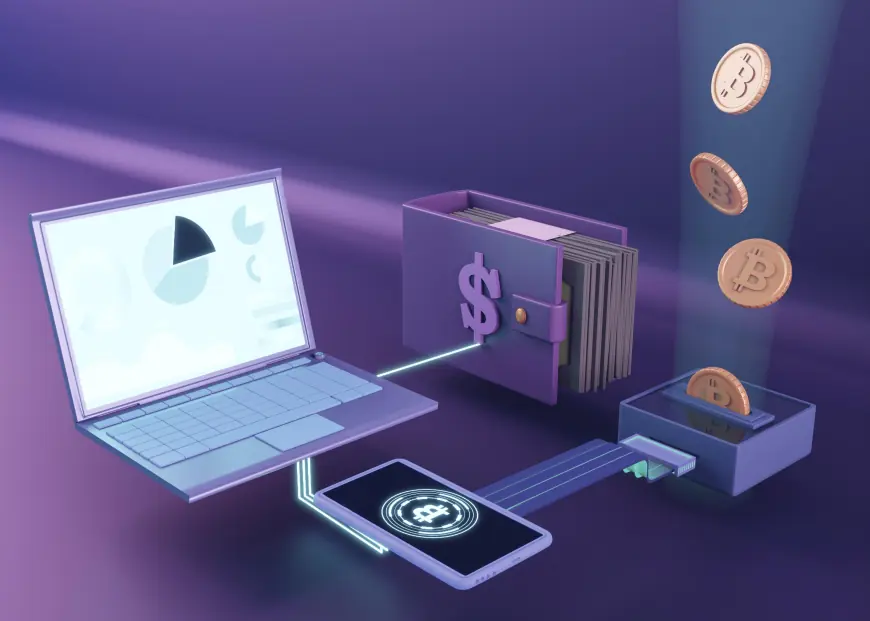Choosing the Right Real-World Asset Tokenization Platform for Your Business
As blockchain technology continues to grow and institutional adoption increases, asset tokenization is set to become a standard practice in the financial sector. Businesses that embrace this change now will be well-positioned to succeed in the evolving digital economy.

Asset tokenization platform development is transforming how businesses and investors manage real-world assets. By utilizing blockchain technology, companies can turn both tangible and intangible assets into digital tokens. This process enhances liquidity, accessibility, and efficiency. However, with the multitude of platforms available, choosing the right real-world asset tokenization platform can be a challenging task. In this blog, we will examine the key factors to consider when selecting a tokenization platform for your business.
1. Understanding Asset Tokenization
Asset tokenization is the process of converting ownership rights of physical or financial assets into blockchain-based digital tokens. These tokens can represent real estate, commodities, stocks, bonds, artwork, intellectual property, and more. Tokenization provides fractional ownership, reduces transaction costs, and enhances security.
Benefits of Asset Tokenization:
- Increased liquidity – Tokenization allows assets that were traditionally illiquid to be traded easily.
- Greater accessibility – Investors worldwide can participate in tokenized asset markets.
- Enhanced security – Blockchain ensures transparency and immutability.
- Cost reduction – Eliminates intermediaries and reduces transaction fees.
2. Key Features to Look for in a Tokenization Platform
Choosing the right platform is crucial for a successful asset tokenization strategy. Here are the essential features to consider:
a. Compliance and Regulatory Support
Regulatory compliance is one of the most critical aspects of asset tokenization. The platform must adhere to legal frameworks, such as Know Your Customer (KYC) and Anti-Money Laundering (AML) regulations, to ensure legitimacy.
What to look for:
- SEC compliance (for U.S.-based projects)
- KYC/AML integration
- Jurisdictional adaptability
b. Security and Transparency
Blockchain technology enhances security, but the chosen platform should implement additional security measures to protect digital assets and transactions.
What to look for:
- End-to-end encryption
- Smart contract audits
- Fraud detection and prevention mechanisms
c. Scalability and Performance
A robust tokenization platform should support high transaction volumes and scale with business growth.
What to look for:
- High-speed transaction processing
- Interoperability with different blockchains
- Support for multiple asset types
d. Smart Contract Capabilities
Smart contracts automate processes such as revenue distribution and compliance enforcement.
What to look for:
- Pre-built smart contract templates
- Customizable automation
- Secure and tested contract protocols
e. User-Friendly Interface
A complex platform can deter adoption. The interface should be intuitive for both businesses and investors.
What to look for:
- Easy asset tokenization process
- Investor-friendly dashboards
- Mobile compatibility
3. Top Asset Tokenization Platforms to Consider
a. Securitize
Securitize offers end-to-end asset tokenization solutions with a focus on regulatory compliance. It is SEC-registered and supports tokenized securities.
Why choose Securitize?
- Compliance-first approach
- Integrated secondary trading options
- Investor onboarding automation
b. Polymath
Polymath is a blockchain-based security token platform that simplifies asset tokenization through its Polymesh blockchain.
Why choose Polymath?
- Security token-specific blockchain
- Compliance tools for legal adherence
- Institutional-grade security
c. Tokeny Solutions
Tokeny Solutions offers an institutional-grade platform that allows businesses to tokenize assets efficiently.
Why choose Tokeny Solutions?
- High scalability
- Comprehensive token issuance tools
- Compliance-driven infrastructure
d. tZERO
As a leading blockchain innovation company, tZERO provides a regulated marketplace for tokenized securities.
Why choose tZERO?
- SEC-compliant trading platform
- Advanced security measures
- Seamless integration with financial institutions
4. Steps to Choosing the Right Platform
Step 1: Define Your Tokenization Goals
Before selecting a platform, determine the type of assets you want to tokenize and your long-term business objectives.
Consider:
- Are you tokenizing real estate, equity, or commodities?
- Do you need a platform with global compliance support?
- What level of investor engagement do you anticipate?
Step 2: Assess Regulatory Requirements
Ensure the platform complies with jurisdictional regulations relevant to your asset type and location.
Step 3: Evaluate Platform Features and Security
Compare platforms based on security protocols, scalability, smart contract capabilities, and ease of use.
Step 4: Check Market Reputation and Reviews
Research user feedback, industry ratings, and case studies to gauge the reliability of the platform.
Step 5: Conduct a Pilot Project
Before fully committing, test the platform with a small-scale tokenization project to assess its performance.
5. Future Trends in Asset Tokenization Platforms
The asset tokenization industry is evolving, with new trends shaping its future:
- Regulated DeFi (Decentralized Finance): More platforms will integrate DeFi features while complying with regulations.
- AI and Automation: AI-powered analytics and automated trading will enhance efficiency.
- Interoperability: Platforms will support cross-chain token transfers for improved flexibility.
- Institutional Adoption: More hedge funds and financial institutions will enter the tokenized asset space.
Conclusion
Selecting the right platform for real-world asset tokenization is crucial for businesses aiming to digitize and trade assets effectively. Key considerations include regulatory compliance, security, scalability, and user experience, all of which should inform the decision-making process. By thoroughly evaluating available platforms and ensuring they align with their business objectives, companies can utilize asset tokenization to unlock new investment opportunities and drive financial innovation.
As blockchain technology continues to grow and institutional adoption increases, asset tokenization is set to become a standard practice in the financial sector. Businesses that embrace this change now will be well-positioned to succeed in the evolving digital economy.












